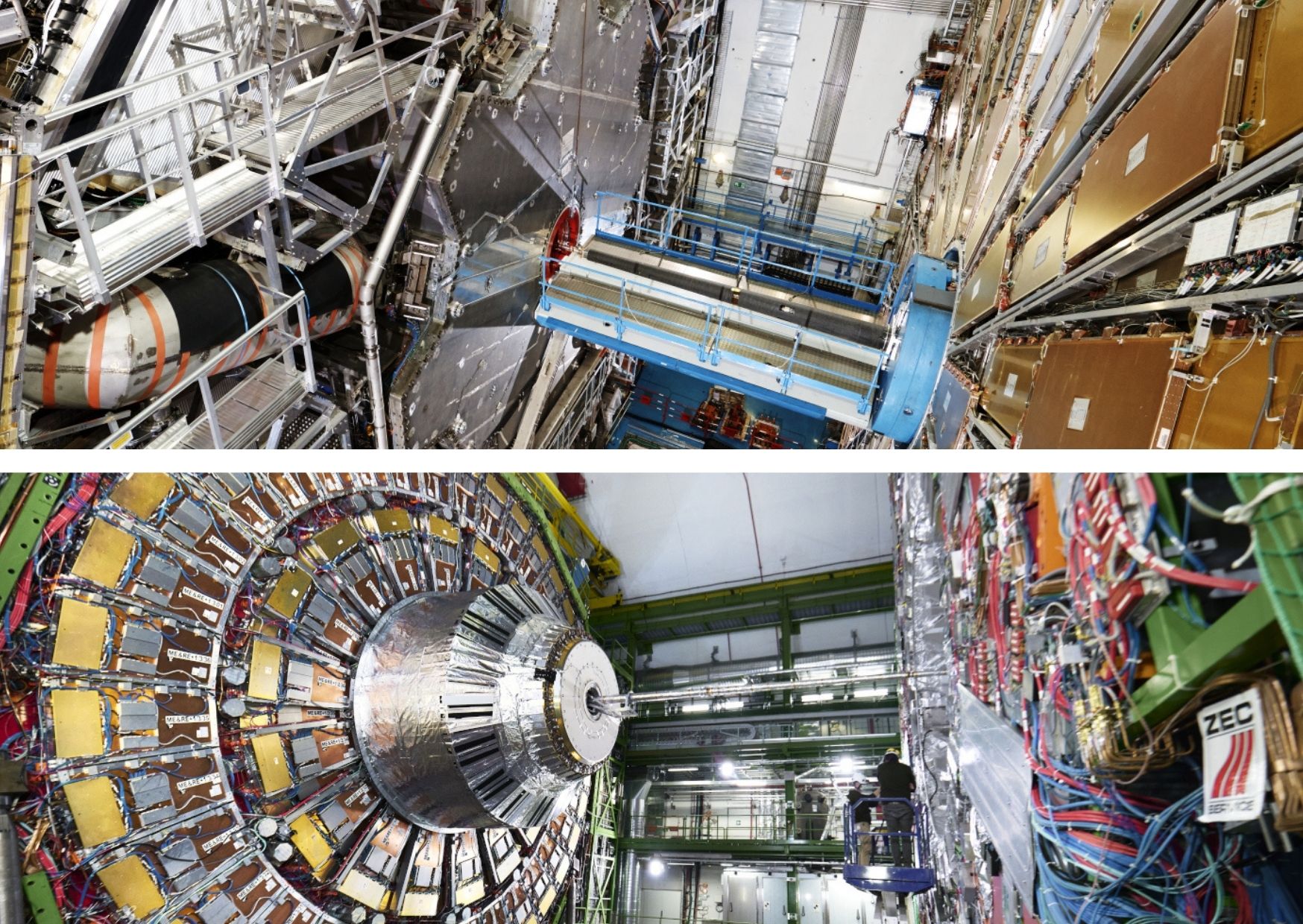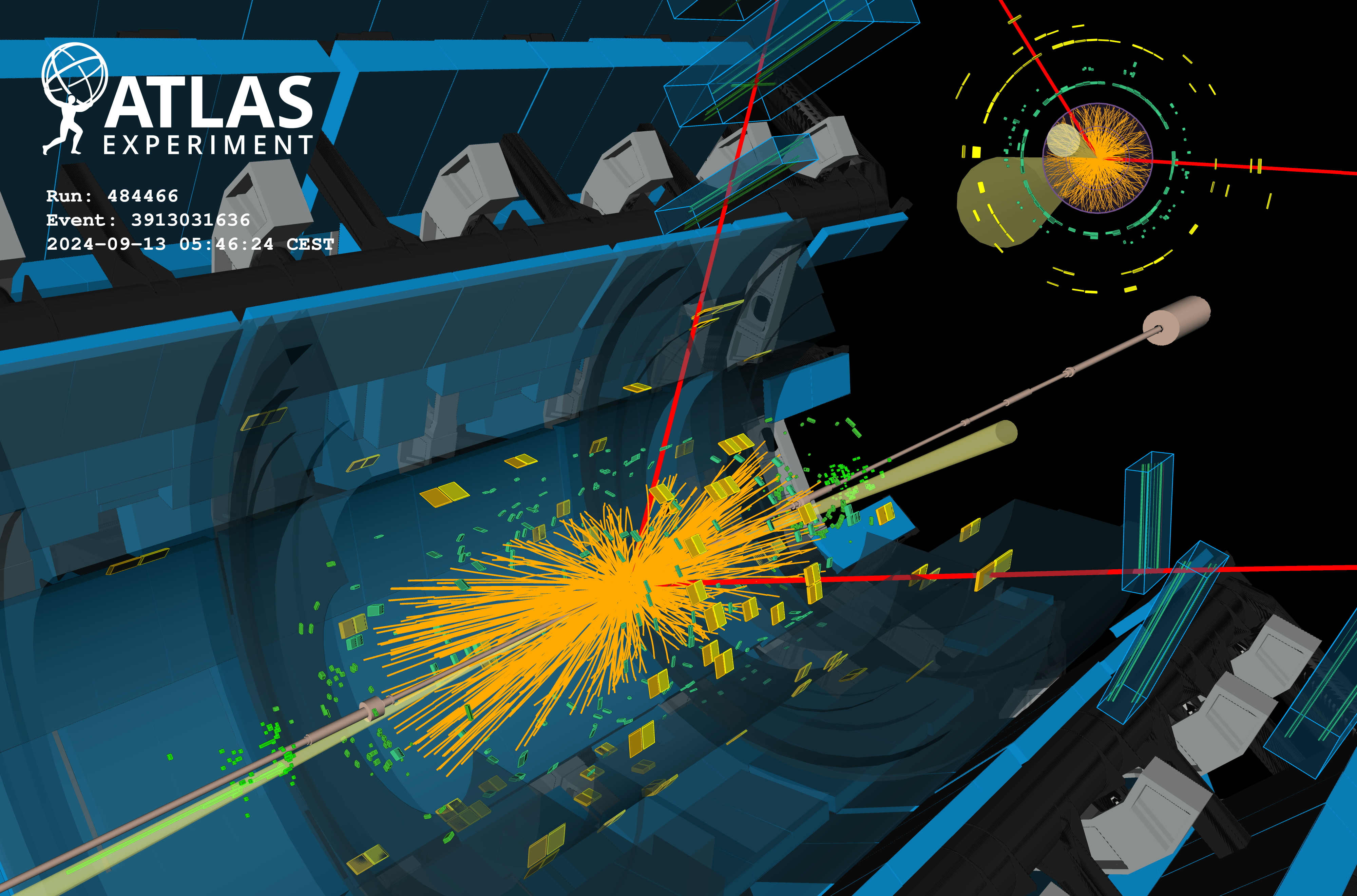ATLAS and CMS release results of most comprehensive studies yet of Higgs boson’s properties
4 July 2022 | By
The collaborations have used the largest samples of proton–proton collision data recorded so far by the experiments to study the unique particle in unprecedented detail.

Today, exactly ten years after announcing the discovery of the Higgs boson, the international ATLAS and CMS collaborations at the Large Hadron Collider (LHC) report the results of their most comprehensive studies yet of the properties of this unique particle. The independent studies, described in two papers published today in Nature, show that the particle’s properties are remarkably consistent with those of the Higgs boson predicted by the Standard Model of particle physics. The studies also show that the particle is increasingly becoming a powerful means to search for new, unknown phenomena that – if found – could help shed light on some of the biggest mysteries of physics, such as the nature of the mysterious dark matter present in the universe.
The Higgs boson is the particle manifestation of an all-pervading quantum field, known as the Higgs field, that is fundamental to describe the universe as we know it. Without this field, elementary particles such as the quark constituents of the protons and neutrons of atomic nuclei, as well as the electrons that surround the nuclei, would not have mass, and nor would the heavy particles (W bosons) that carry the charged weak force, which initiates the nuclear reaction that powers the Sun.
To explore the full potential of the LHC data for the study of the Higgs boson, including its interactions with other particles, ATLAS and CMS combine numerous complementary processes in which the Higgs boson is produced and “decays” into other particles.
This is what the collaborations have done in their new, independent studies, using their full LHC Run 2 data sets, which each include over 10 000 trillion proton–proton collisions and about 8 million Higgs bosons – 30 times more than at the time of the particle’s discovery. The new studies each combine an unprecedented number and variety of Higgs boson production and decay processes to obtain the most precise and detailed set of measurements to date of their rates, as well as of the strengths of the Higgs boson’s interactions with other particles.
"The Higgs boson discovery has sparked an exciting, deep and broad experimental effort that will extend throughout the full LHC programme.”
- Andreas Hoecker, ATLAS Spokesperson
All of the measurements are remarkably consistent with the Standard Model predictions within a range of uncertainties depending, among other criteria, on the abundance of a given process. For the Higgs boson’s interaction strength with the carriers of the weak force, an uncertainty of 6% is achieved. By way of comparison, similar analyses with the full Run 1 data sets resulted in a 15% uncertainty for that interaction strength.
“After just ten years of Higgs boson exploration at the LHC, the ATLAS and CMS experiments have provided a detailed map of its interactions with force carriers and matter particles,” says ATLAS spokesperson Andreas Hoecker. “The Higgs sector is directly connected with very profound questions related to the evolution of the early universe and its stability, as well as to the striking mass pattern of matter particles. The Higgs boson discovery has sparked an exciting, deep and broad experimental effort that will extend throughout the full LHC programme.”
“Sketching such a portrait of the Higgs boson this early on was unthinkable before the LHC started operating,” says CMS spokesperson Luca Malgeri. “The reasons for this achievement are manifold and include the exceptional performances of the LHC and of the ATLAS and CMS detectors, and the ingenious data analysis techniques employed.”
The new combination analyses also provide, among other new results, stringent bounds on the Higgs boson’s interaction with itself and also on new, unknown phenomena beyond the Standard Model, such as on Higgs boson decays into invisible particles that may make up dark matter.
ATLAS and CMS will continue revealing the nature of the Higgs boson using data from the LHC’s Run 3, which starts tomorrow at a new high-energy frontier, and from the collider’s major upgrade, the High-Luminosity LHC (HL-LHC), from 2029. With about 18 million Higgs bosons projected to be produced in each experiment in Run 3 and some 180 million in the HL-LHC’s runs, the collaborations expect to not only reduce significantly the measurement uncertainties of the Higgs boson’s interactions determined so far but also to observe some of the Higgs boson’s interactions with the lighter matter particles and to obtain the first significant evidence of the boson’s interaction with itself.
Find out more in the ATLAS and CMS Nature papers.
This media update was originally published on the CERN Press website (English, French).



